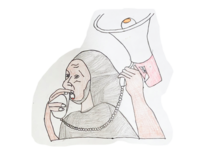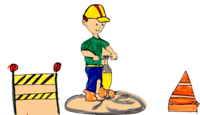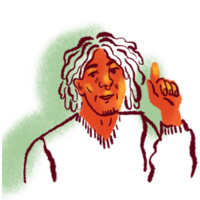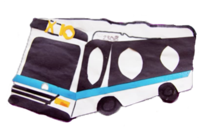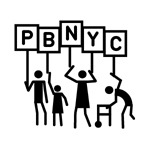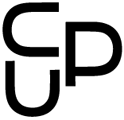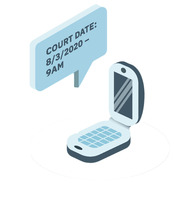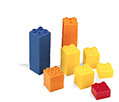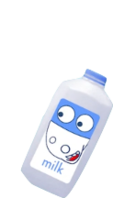Meet the designer: Caroline Oh
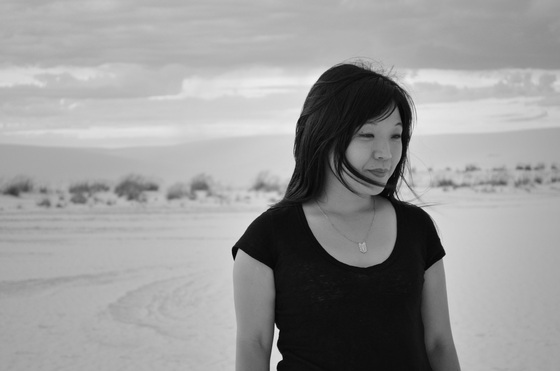
As part of a new feature on CUP collaborators, we asked Caroline Oh to tell us a little bit more about herself and about working on a CUP project.
In 2013, Caroline was one of CUP’s Public Access Design Fellows and collaborated on the project, ¡No me han pagado!, a Spanish-language guide to help day laborers protect themselves from wage theft.
1. Can you tell us a little bit more about you as a designer? How did you start doing design work?
Film and animation were my first creative pursuits, but the entertainment industry wasn’t the place for me so I decided to study design at the California Institute of the Arts. It was an empowering experience in that it introduced me to a raw approach to visual communication beyond typical commercial uses — with the depth of its history and potential for expression and nuance. I had only appreciated this on the most surface level up until that point.
2. How would you describe your practice?
I enjoy working with small teams on interactive projects that aim toward personal learning. The small teams appeal to me because of the quick decision-making and sense of creative ownership; and I enjoy interactive projects for the life that they can take on after being born into the world. It’s in the nature of design to want to control every detail of an experience, but the most interesting interactive projects reveal something unexpected once users take part. A couple examples of recent work are Shapekit, a tool for children to learn about and build with colors and shapes, and Totem, which helps you make a video portrait using audio interviews and photos, both of which launched for iPad in 2015 by teams of three. I try to keep my practice varied with lo-fi projects as well, like the silk-screened LP packaging I designed for the noise band Night Toilet.
3. What projects are you working on now?
I joined the startup Caeden as the Design Director – UI/UX last year to lead the design of the app that works with their new connected bracelet called Sona, shipping this spring. I was excited about the opportunity to design with biofeedback toward a wellness initiative and to collaborate with industrial designers and engineers on a physical product. I was also eager to learn from a more experienced team about their business strategy in launching a new consumer product into a competitive market.
4. Are there other designers that inspire you?
So many designers are doing incredible work, but I often find myself seeking inspiration outside the design world — in performance, nature, science, film or art. Mexico-City based artist Francis Alÿs, is a recent discovery for me. His work deals with vital and immediate issues, but is also beautiful in form and accessible to the public.
5. What was the most exciting part of working on the ¡No Me Han Pagado! project?
It was inspiring to work directly with the NICE advocates — particularly Valeria Treves and Jessica Garcia, the Executive Director and Director of Organizing & Programs at the time — and to engage directly with their community. During our first meeting, day laborers shared their own stories of wage theft; I was particularly affected by one of their wives candid comments about how the damage has been far more than financial — having already caused problems for their marriage and children. As I worked on the illustrations and design I tried to keep personal stories like theirs at the center of the project; I wanted the guide to not only be a useful resource but also one that treated the community members with dignity.
6. What was the most important thing you learned from the project?
Be concise with the content, and design and illustrate with specificity. After finding that most representations of day laborers online are unsympathetic stock of guys on street corners, we started gathering our own collections of photos and stories — from the boots NICE’s members like to wear to the way one’s uncle puts down his cap and keys on the kitchen table after work. With the aim of reflecting their specific New York community, almost all of the illustrations in No Me Han Pagado are based on member photos and anecdotes like this. I felt proud of the care with which we approached these details when many community members enthusiastically responded to the guide at the launch, even posing for photos with the illustrations.
7. How did the project impact your work moving forward?
I consider many of my projects to be tools, but none have been as critical of a resource as ¡No Me Han Pagado!. With projects since then, I try to keep the community for which a project is intended at the center of the design process. When you’re sitting at a computer surrounded by designers like you and a document of content, it’s easy to lose sight of the importance of this. Also, like many of the other design fellows at CUP, PAD helped me to launch an independent practice.
8. What is your secret skill that has nothing to do with your design work?
I am good at sleeping.
To learn more about Caroline’s work, click here.
